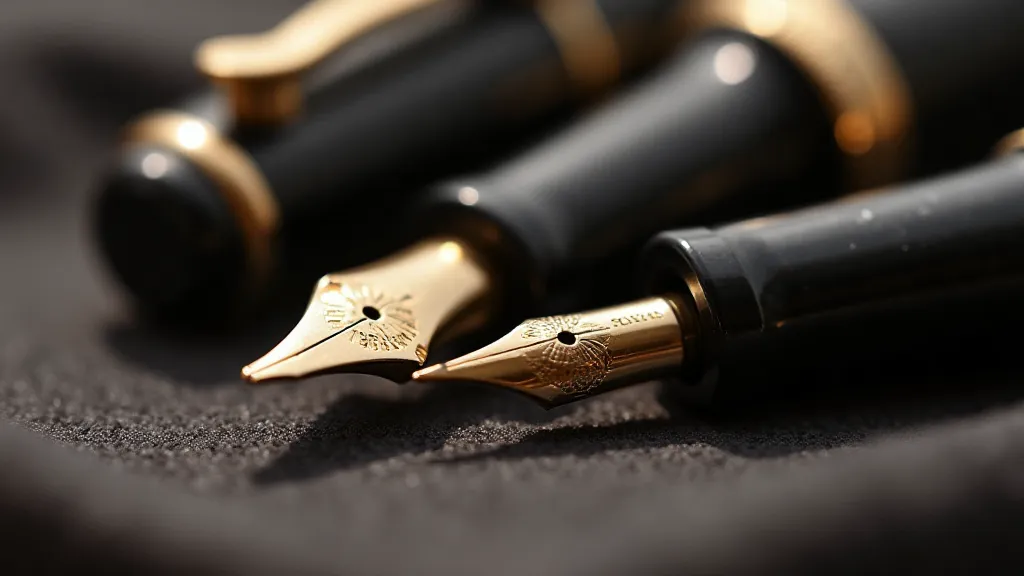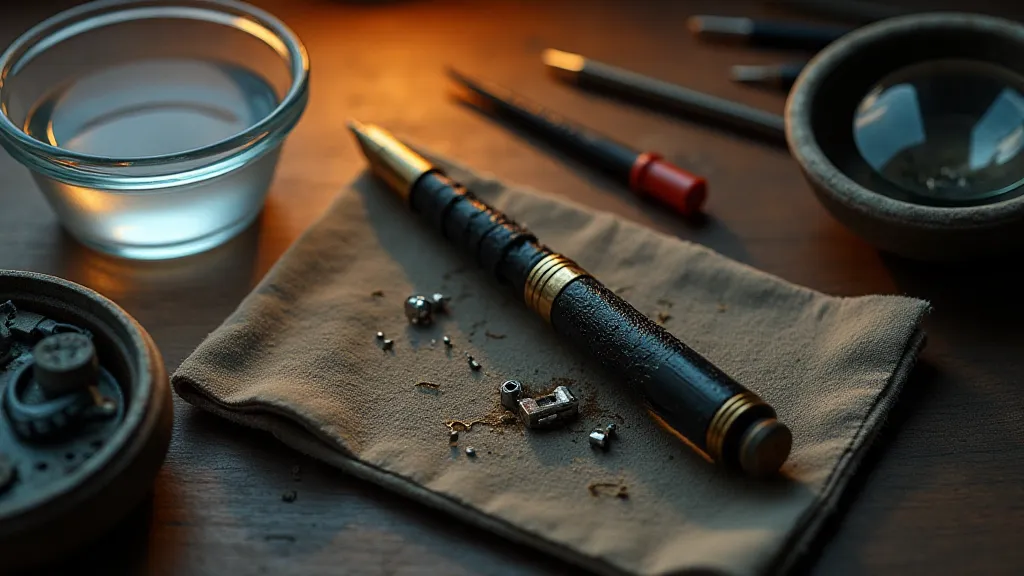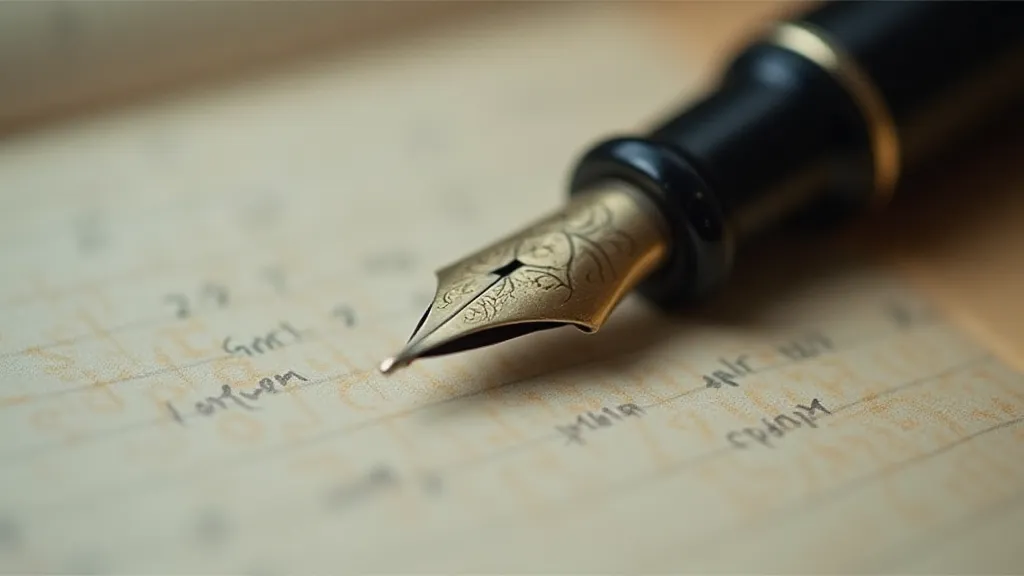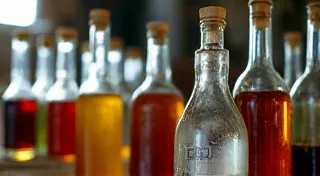The Loom of Time: Weaving New Life into a Broken-Down Pen
The antique pen. It’s more than just an instrument for writing; it's a tangible echo of a bygone era. Held in your hand, it whispers stories of meticulous craftsmanship, elegant correspondence, and the quiet dedication of a past maker. I remember finding my first – a Conway Stewart 58 – at a dusty antique shop, tucked away amongst chipped porcelain and yellowed photographs. Its black and pearl finish was worn, the nib tarnished, but the sheer weight of it, the sense of history it conveyed, captivated me instantly. That was the beginning of a journey, a fascination that has blossomed into a passion for calligraphy pen restoration. It’s a journey of patience, precision, and a profound respect for the artistry that created these beautiful objects.
The process of restoration isn't just about fixing a broken pen; it’s akin to weaving a tapestry. Each component – the barrel, the cap, the nib, the feed – represents a thread, intricately linked to the whole. To restore a pen is to unravel the damage, understand its construction, and then carefully re-weave the threads, strengthening the fabric of its history.

The Echoes of the Past: A Brief History
Calligraphy pens weren't always the sophisticated writing instruments we know today. Early examples, dating back centuries, were simple quill pens fashioned from feathers. As technology advanced, metal pens emerged, initially solid and unwieldy, gradually evolving into the lever-fillers, piston-fillers, and button-fillers that characterized the golden age of pen manufacturing in the late 19th and early 20th centuries. Brands like Waterman, Parker, Sheaffer, and Conway Stewart rose to prominence, renowned for their innovation, quality, and the enduring beauty of their designs. These weren't mass-produced objects; they were statements of elegance and refined taste, crafted by skilled artisans who took immense pride in their work.
The early 20th century witnessed a shift in manufacturing, with the advent of plastics and increased automation. While this brought pens to a wider audience, it also arguably diminished the level of craftsmanship found in their predecessors. Restoring a vintage pen is, in many ways, a celebration of that earlier era, a tribute to the human touch that is often lost in modern production.
The Disassembly: Unraveling the Threads
Before any cleaning or repair can begin, the pen must be carefully disassembled. This is a delicate process requiring patience and a keen eye. Some pens, particularly lever-fillers and button-fillers, can be surprisingly complex internally. Each component must be handled with respect, noting its position and function. Photographs are incredibly useful during this stage – a photographic record serves as a roadmap for reassembly.
The tools of the trade are simple: a clean workspace, a set of small screwdrivers, a pair of tweezers, and a magnifying glass are essential. Force is never an option; gentle persuasion and a thorough understanding of the pen's mechanics are key to preventing further damage. One of the most common challenges is corrosion, especially on older pens. The ink, a corrosive agent by its very nature, can leave behind a residue that binds the components together. A specialized pen lubricant can often help to loosen these stubborn parts.
Cleaning: Releasing the Voice
Once disassembled, the cleaning process begins. This involves removing old ink residue, grime, and any other contaminants that may be affecting the pen’s performance. Ultrasonic cleaning is a popular method, using gentle vibrations in a specialized cleaning solution to dislodge debris. However, not all pens are suitable for ultrasonic cleaning, particularly those with fragile components or celluloid barrels, which can be damaged by the vibrations.
For pens with stubborn ink clogs, a soak in a gentle cleaning solution, followed by careful flushing with distilled water, is often more effective. The nib and feed, the heart of the pen’s writing system, require special attention. These components are responsible for delivering ink to the paper, and any blockage can result in scratchy writing or ink flow problems. A specialized nib cleaning solution, carefully applied with a soft brush, can often resolve these issues. It’s a subtle act, but incredibly satisfying – to see a pen, once silent and unresponsive, begin to write smoothly again is a reward in itself.

Nib Adjustment: The Art of the Touch
The nib, arguably the most critical element of a calligraphy pen, requires a delicate touch. Over time, nibs can become bent, misaligned, or damaged, resulting in scratchy writing or inconsistent ink flow. Nib adjustment is a complex skill, requiring a deep understanding of nib geometry and the subtle forces at play. It involves carefully bending the tines of the nib using specialized tools to restore its proper alignment.
This is a process best left to experienced restorers, as improper adjustment can permanently damage the nib. However, simple adjustments, such as removing a slight curve or flattening a tine, can sometimes be achieved with a gentle touch and a keen eye. The goal is to restore the nib’s flexibility and responsiveness, allowing it to write smoothly and consistently.
Preservation, Not Perfection
It's important to remember that restoration isn’s about creating a flawless replica of a new pen. The charm of a vintage pen lies in its history, its imperfections, and the subtle signs of wear that tell a story. While cleaning and repair are essential, it’s crucial to preserve the pen's character. Over-polishing a barrel can erase the patina that has developed over decades, diminishing its value and appeal.
The aim is to stabilize the pen’s condition, repair any damage, and ensure that it can continue to be enjoyed for generations to come. Each pen has lived a life, a history. Our role, as restorers, is to be its custodians, safeguarding its legacy, and allowing it to once again share its voice.





